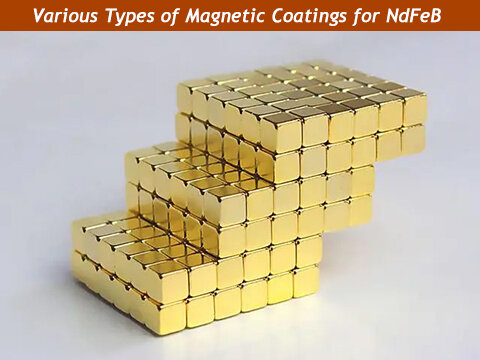
Magnet plating is an important part of using magnets. It affects how long they last, how well they work, and how they look. This guide will give you useful information about magnet plating. You'll learn what it is, why it's good, the common types of magnetic coatings for NdFeB magnet, and how to choose the right magnetic coating.
Magnet plating is a process that involves adding a protective layer to the surface of a magnet. This layer helps prevent oxidation and corrosion, which is especially important for neodymium magnets that can rust quickly.
The plating process consists of a few steps. First, the magnet surface is thoroughly cleaned to remove any dirt, oil, or other substances. Next, the magnet is dipped into a plating solution to apply the protective layer. Finally, the coated magnet is carefully rinsed and dried to ensure a smooth and durable coating.
By applying magnet plating, we can extend the lifespan of magnets and keep them in good condition for longer.
The primary reason for magnet plating is to provide a barrier against corrosion. This becomes especially important if the magnet is intended for outdoor use or in environments where it could potentially come into contact with moisture.
Protection Against Corrosion: A plated or coated magnet is less likely to corrode and therefore has a longer lifespan.
Prevents Oxidation: Oxidation can degrade the quality of the magnet over time. A protective coating helps to prevent this.
Enhanced Durability: The coating also offers extra physical protection, making the magnet more resistant to scratches, chips, and other forms of damage.
Aesthetic Improvement: Plating doesn't only offer functional benefits; it can also enhance the magnet's appearance by providing a shiny, polished, or even colored finish.
Let's take NdFeb magnets as an example. NdFeB magnets are widely used permanent magnets due to their many advantages, such as being lightweight, powerful, and exhibiting resistance to demagnetization. However, they are prone to oxidation if not treated carefully. Therefore, it is important to protect neodymium magnets with a suitable protective coating. You can find common types of magnetic coatings for NdFeB magnets as below:

Nickel plating is the most common coating used on most magnets on the market. It is typically applied as a three-layer coating (nickel-copper-nickel) with copper in between. It is suitable for indoor/outdoor use as long as it is moisture-resistant. A black nickel finish is also available as a shiny dark charcoal color. Nickel plating is easy to apply and is cost-effective, making it a popular choice for many applications.
Electroless nickel is similar to normal nickel, except that it is highly resistant to alkalis, salt/brine solutions, chemical and petroleum environments, and all types of hydrocarbons, solvents, ammonia solutions, and acids. This makes electroless nickel an excellent choice for magnets that require corrosion resistance. Electroless nickel coatings provide a uniform and consistent thickness, making them ideal for applications that require tight tolerances.

Zinc is usually used for a single coat. It offers excellent performance as a corrosion-resistant coating at an economical price. As the zinc begins to oxidize, it forms a layer of zinc oxide that helps protect the magnet. Galvanized coatings are easy to apply and do not require a lot of equipment, making them a popular choice for many applications. They are also highly recyclable and environmentally friendly.
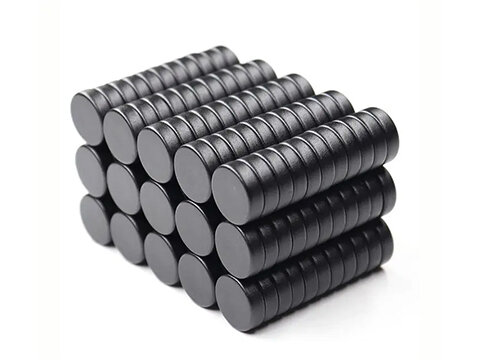
The epoxy coating is mostly black and covers the triple nickel coating (Ni-Cu-Ni-Epoxy). It provides excellent performance in outdoor applications where corrosion resistance is required. This coating is softer than other coatings and scratches easily, which can expose the underlying layers and cause the magnet to corrode. Epoxy coatings are available in a variety of colors. They are also known for their excellent adhesion properties, making them ideal for applications where the magnet is exposed to high levels of stress.
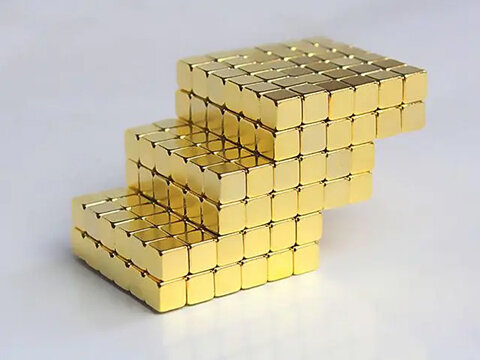
Gold coating is available as a very thin layer of 24k gold overlaying the nickel coating. If you want to lower the cost of gold-plated magnets, you can use gold dye, but the color is not as bright as real gold. This type of coating is often found in magnetic therapy applications. Gold coatings provide excellent corrosion resistance and are highly resistant to wear and tear.
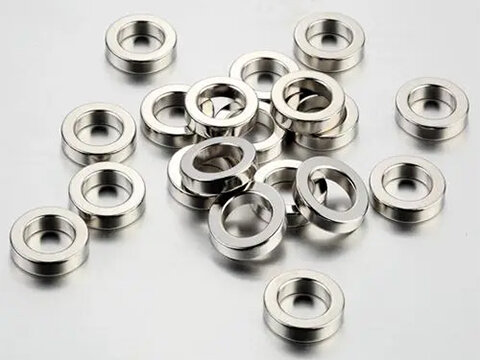
Silver plating is popular in medical applications. Silver plating exhibits good corrosion resistance, biocompatibility, and inherent resistance to bacteria. It is also highly conductive, making it ideal for use in electrical applications. Silver coatings are easy to apply and provide a uniform and consistent thickness.

The plastic coating is super durable and highly corrosion-resistant. It prevents magnets from cracking due to impact and prevents corrosion by creating a waterproof barrier between the magnet and the environment. This type of coating comes in any color and is more expensive than other types because it requires the use of injection molds. The plastic coating is mostly 1mm thick and does not degrade the magnet due to its thickness. Rubber coatings provide excellent abrasion resistance and are highly resistant to wear and tear. They also provide a non-slip surface, making them ideal for use in applications where the magnet is exposed to high levels of stress.
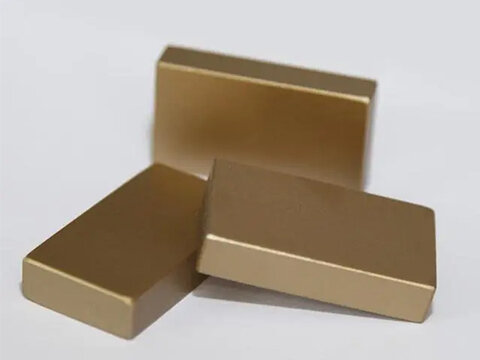
Everlube is an aluminized barrier coating that provides maximum corrosion protection when applied to rare earth magnets. The coating is extremely durable and has excellent chemical and corrosion resistance to a wide range of substances. Everlube coatings are easy to apply and provide a uniform and consistent thickness.
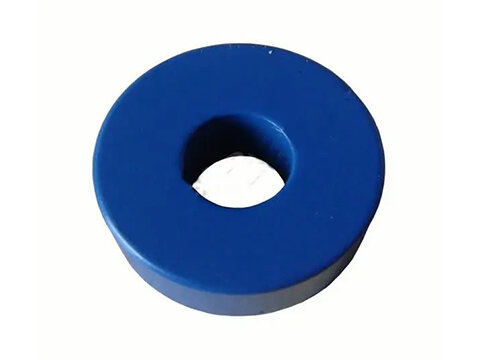
Teflon is extremely elastic and can withstand various harsh environments. It is highly corrosion-resistant. However, Teflon coatings do not perform well with adhesives and are not recommended for these types of applications. Teflon coating is available in a variety of colors. Teflon coatings provide excellent wear resistance and are highly resistant to abrasion.

Parylene is an ultra-thin, pinhole-free polymer coating that provides superior abrasion resistance and improved abrasion resistance. It is commonly used in medical equipment, electronics, transportation, and defense/aerospace applications. Parylene coatings are highly conformal and provide excellent adhesion, making them ideal for applications where the magnet is exposed to high levels of stress. They also provide excellent protection against moisture and other environmental hazards.
Think about where the magnets will be used. Consider things like how hot or humid it is, what chemicals they might be exposed to, and if they might get damaged.
Once a magnet has been plated or coated, it typically cannot be fabricated further. Therefore, all necessary fabrication should be done prior to plating.
The thickness of the coating can impact the magnet's performance. Too thin, and it may not provide adequate protection; too thick, and it could interfere with the magnet's functionality.
Think about how much different coating options will cost. Some coatings may be more expensive but offer better protection and last longer.
Consider any special needs of the job, like if the coating needs to be electrically insulated, biocompatible, or look good.
By thinking about these things, you can choose a magnetic coating that works well for magnets and fits the specific needs of your job.
Magnet plating plays a crucial role in several industries. Let's take a closer look:
Automotive Industry: Plated magnets are used in various parts of vehicles, including sensors, motors, and other components where durability and performance are critical.
Consumer Electronics: Many electronic devices, like smartphones, tablets, and laptops, use plated magnets in their speakers and other components.
Medical Devices: Plated magnets are essential in medical equipment like MRI machines, where they must withstand harsh conditions while maintaining their magnetic properties.
In summary, magnetic coatings can make magnets better in many ways. They can protect the magnets from rust and damage, and make them even stronger. There are different coatings to choose from, like nickel, zinc, epoxy, and Parylene.
Each type has its own benefits and drawbacks. To pick the best one for your needs, think about things like where the magnets will be used, how much protection they need, and how much you can spend. Remember to use the right process for coating the magnets, and to keep them maintained.
If you're not sure what to do, talk to our expert. By using the right coating, you can make your magnets even more powerful and useful.
Posted on October 14, 2024 by MagnetAdmin
Posted on July 12, 2024 by MagnetAdmin
Posted on June 07, 2024 by MagnetAdmin
Posted on October 10, 2023 by MagnetAdmin
Posted on September 19, 2023 by MagnetAdmin
Posted on August 07, 2023 by MagnetAdmin
Posted on July 06, 2023 by MagnetAdmin
Posted on October 10, 2023 by MagnetAdmin
Posted on June 27, 2023 by MagnetAdmin
Posted on June 07, 2024 by MagnetAdmin

